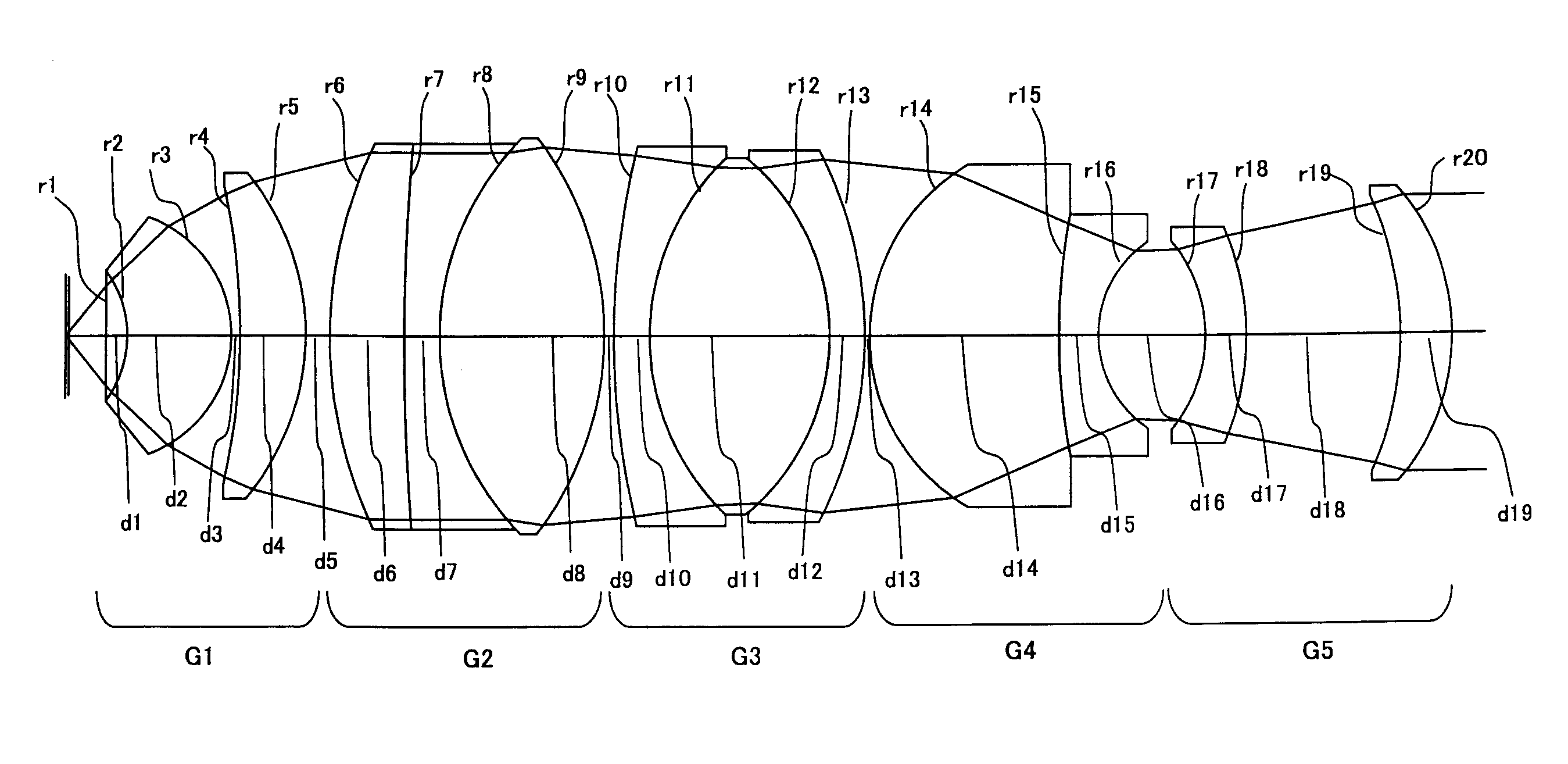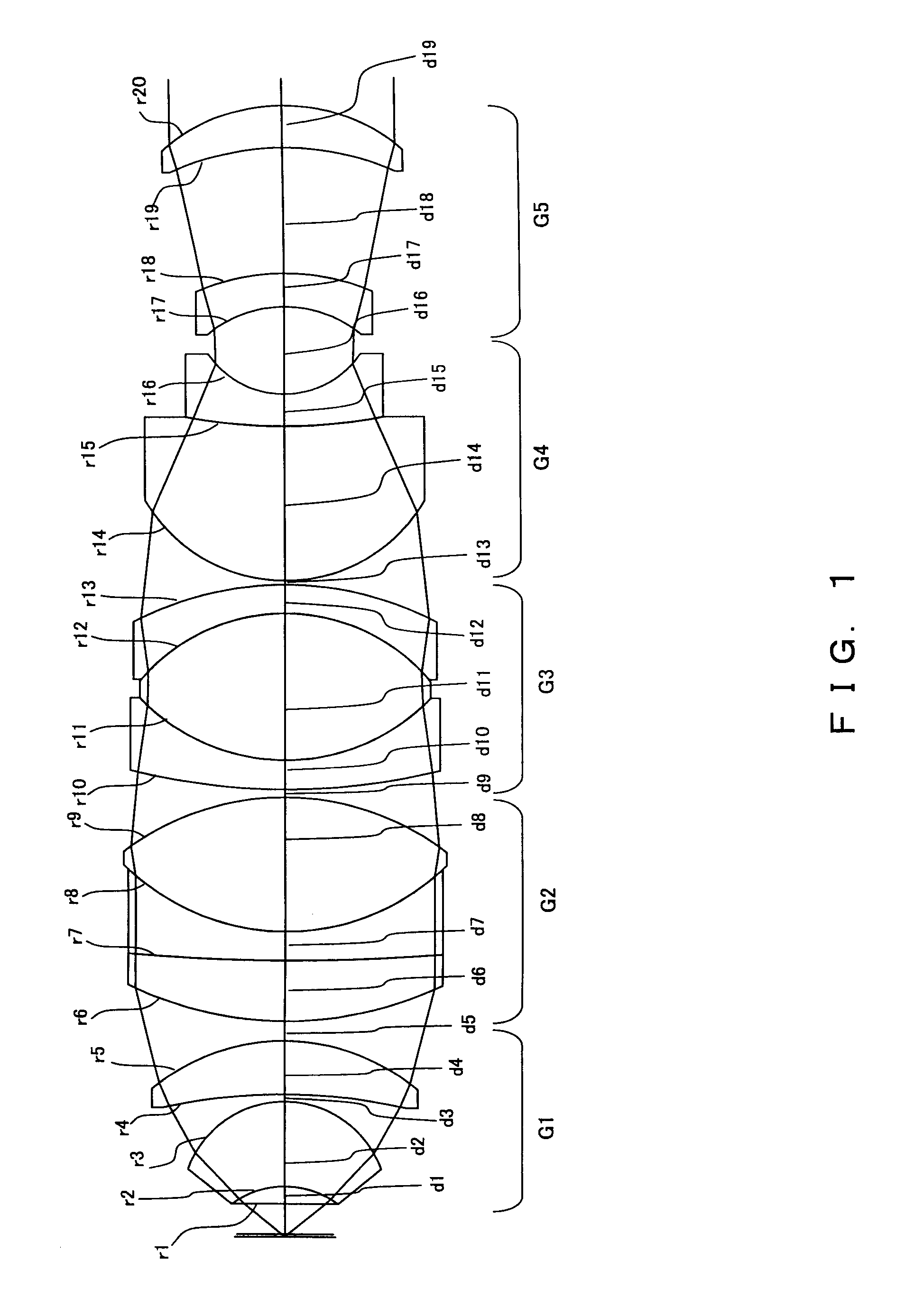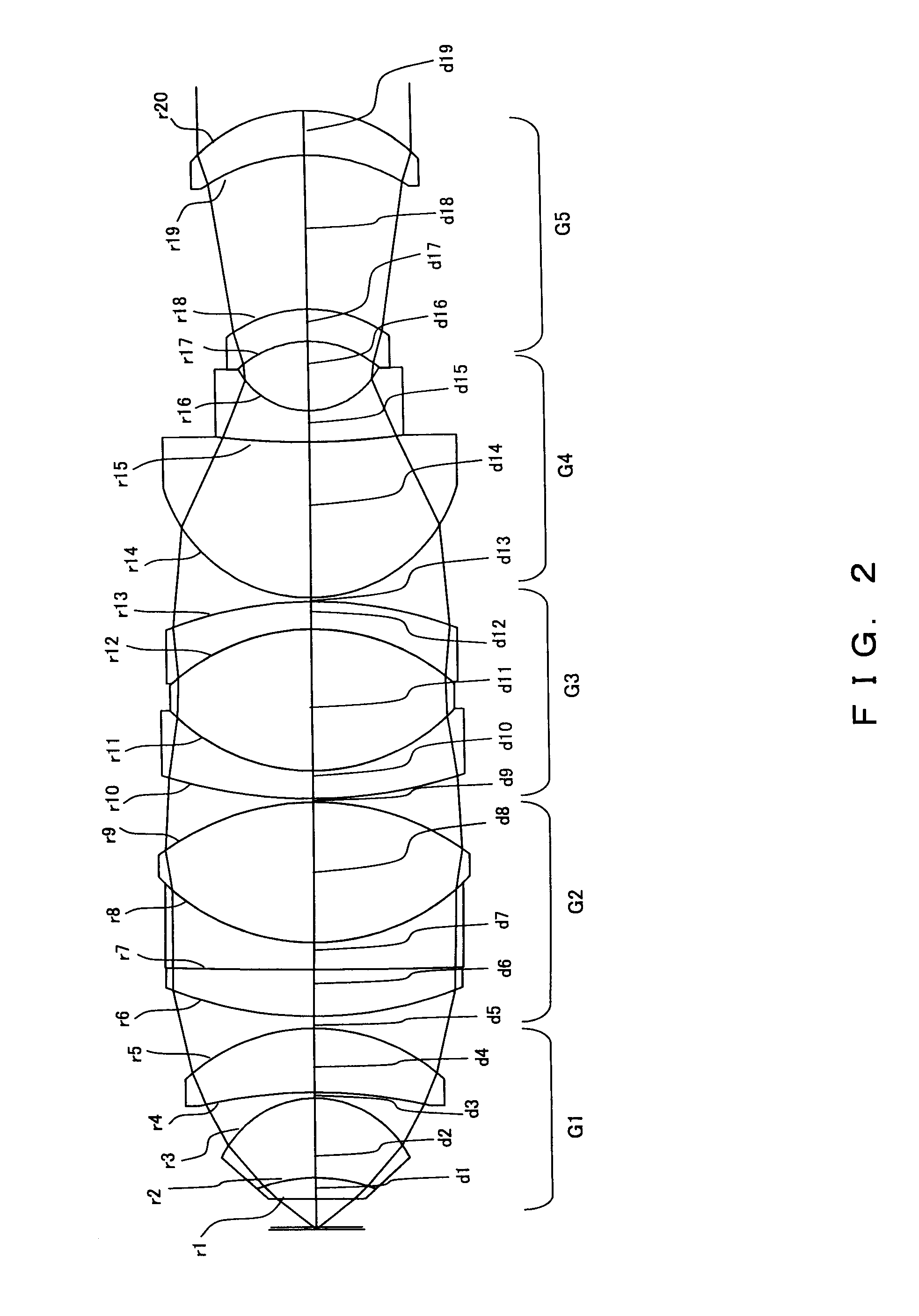Immersion microscope objective and laser scanning microscope system using same
a laser scanning microscope and microscope technology, applied in the field of microscope objective and laser scanning microscope system using same, can solve the problems of low ultraviolet light transmittance of conventional optical glass, high phototoxicity of ultraviolet light, and inability to reach deep inside the brain
- Summary
- Abstract
- Description
- Claims
- Application Information
AI Technical Summary
Benefits of technology
Problems solved by technology
Method used
Image
Examples
embodiment 1
[0186]In Embodiment 1, as shown in the cross-sectional view of FIG. 1, the first lens group G1 is formed by a doublet (consisting of a piano-convex lens element and a meniscus lens element with its concave surface on the object side) and a meniscus lens element. The second lens group G2 is formed by a triplet (consisting of two meniscus lens elements with their concave surfaces on the image side and a lens element of positive refractive power). The third lens group G3 is formed by a triplet (consisting of a meniscus lens element with its concave surface on the image side, a biconvex lens element, and a meniscus lens element with its concave surface on the object side. The fourth lens group G4 is formed of a doublet (consisting of two meniscus lens elements with their concave surfaces on the image side). The fifth lens group G5 is formed of two meniscus lens elements with their concave surfaces on the object side. In this embodiment, the second lens group G2 moves relative to the fir...
embodiment 2
[0197]In Embodiment 2, as shown in a cross-sectional view of FIG. 2, the first lens group G1 is formed of a doublet (that consists of a plano-convex lens and a meniscus lens with its concave surface on the object side) and a meniscus lens element. The second lens group G2 consists of a triplet that is formed of two meniscus lens elements with their concave surfaces on the image side, and a biconvex lens. The third lens group G3 consists of a triplet that is formed of a meniscus lens element with its concave surface on the image side, a biconvex lens, and a meniscus lens element with its concave surface on the object side. The fourth lens group G4 consists of a doublet that is formed of two meniscus lens elements with their concave surfaces on the image side. The fifth lens group G5 includes two meniscus lens elements, each with its concave surface on the object side. The second lens group G2 moves relative to the positions of the first and third lens groups G1 and G3 so as to correc...
embodiment 3
[0207]In Embodiment 3, as shown in a cross-sectional view of FIG. 3, the first lens group G1 is formed of a doublet (that consists of a plano-convex lens element with its planar surface on the object side and a meniscus lens element with its concave surface on the object side) and a biconvex lens. The second lens group G2 is formed of a biconvex lens, a plano-concave lens with its concave surface on the object side, and a plano-convex lens. The third lens group G3 is formed by a triplet (that consists of a meniscus lens element with its concave surface on the image side, a biconvex lens element, and a meniscus lens element with its concave surface on the object side. The fourth lens group G4 is formed of a doublet that consists of a biconvex lens element and a biconcave lens element. The fifth lens group G5 is formed of a meniscus lens element with its concave surface on the object side and a biconvex lens element. The third lens group G3 moves along the optical axis relative to the...
PUM
 Login to View More
Login to View More Abstract
Description
Claims
Application Information
 Login to View More
Login to View More - R&D
- Intellectual Property
- Life Sciences
- Materials
- Tech Scout
- Unparalleled Data Quality
- Higher Quality Content
- 60% Fewer Hallucinations
Browse by: Latest US Patents, China's latest patents, Technical Efficacy Thesaurus, Application Domain, Technology Topic, Popular Technical Reports.
© 2025 PatSnap. All rights reserved.Legal|Privacy policy|Modern Slavery Act Transparency Statement|Sitemap|About US| Contact US: help@patsnap.com



